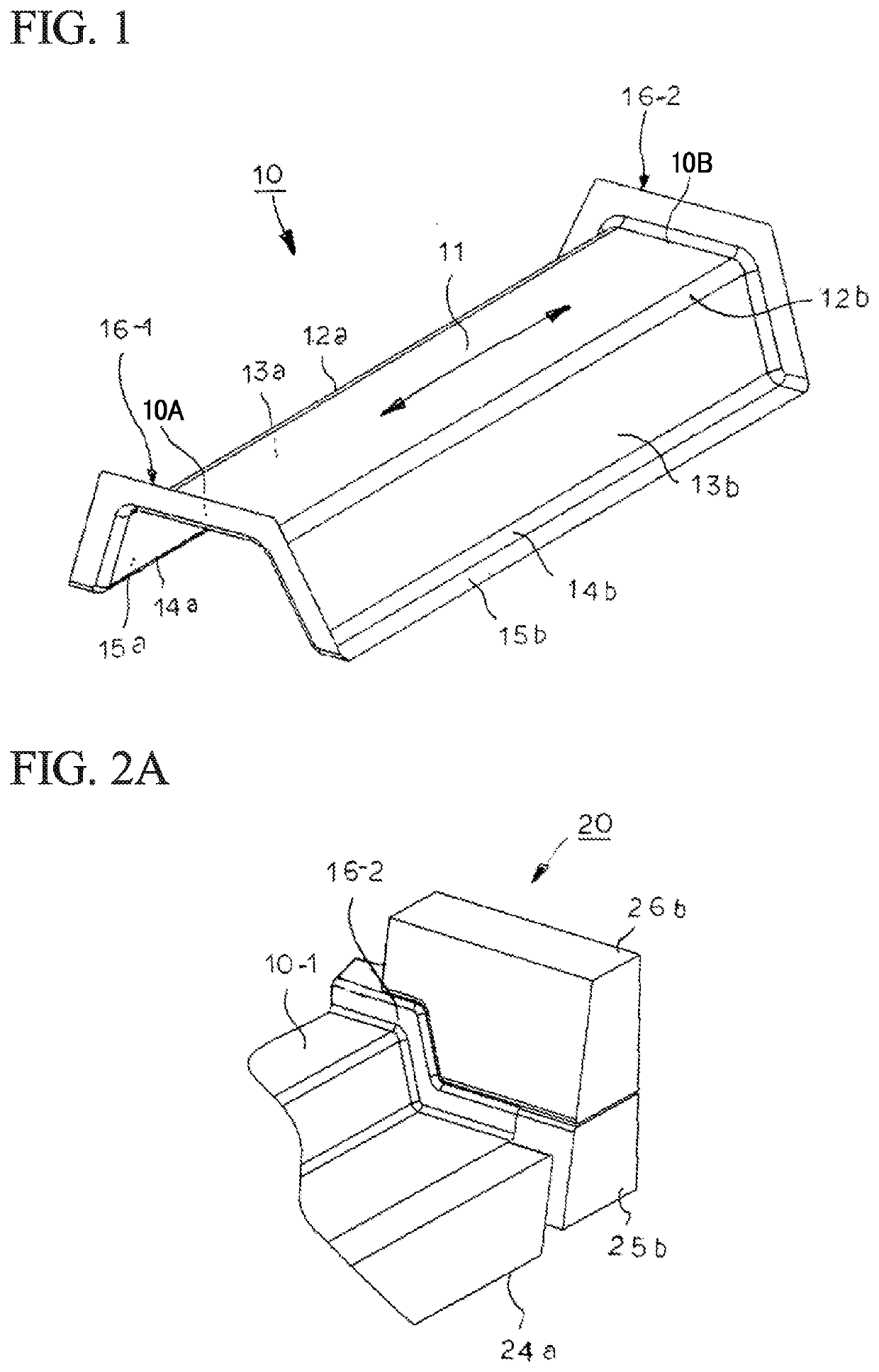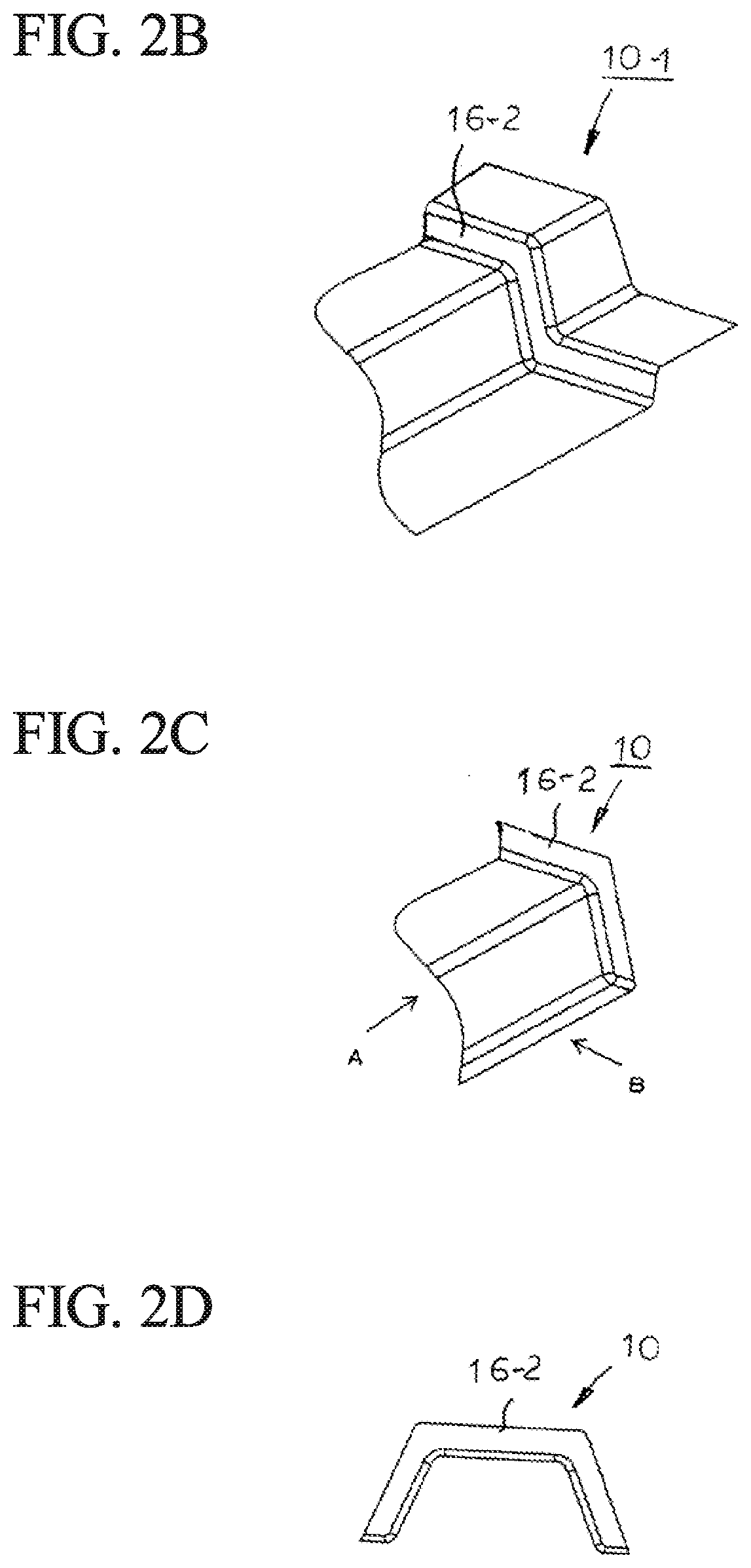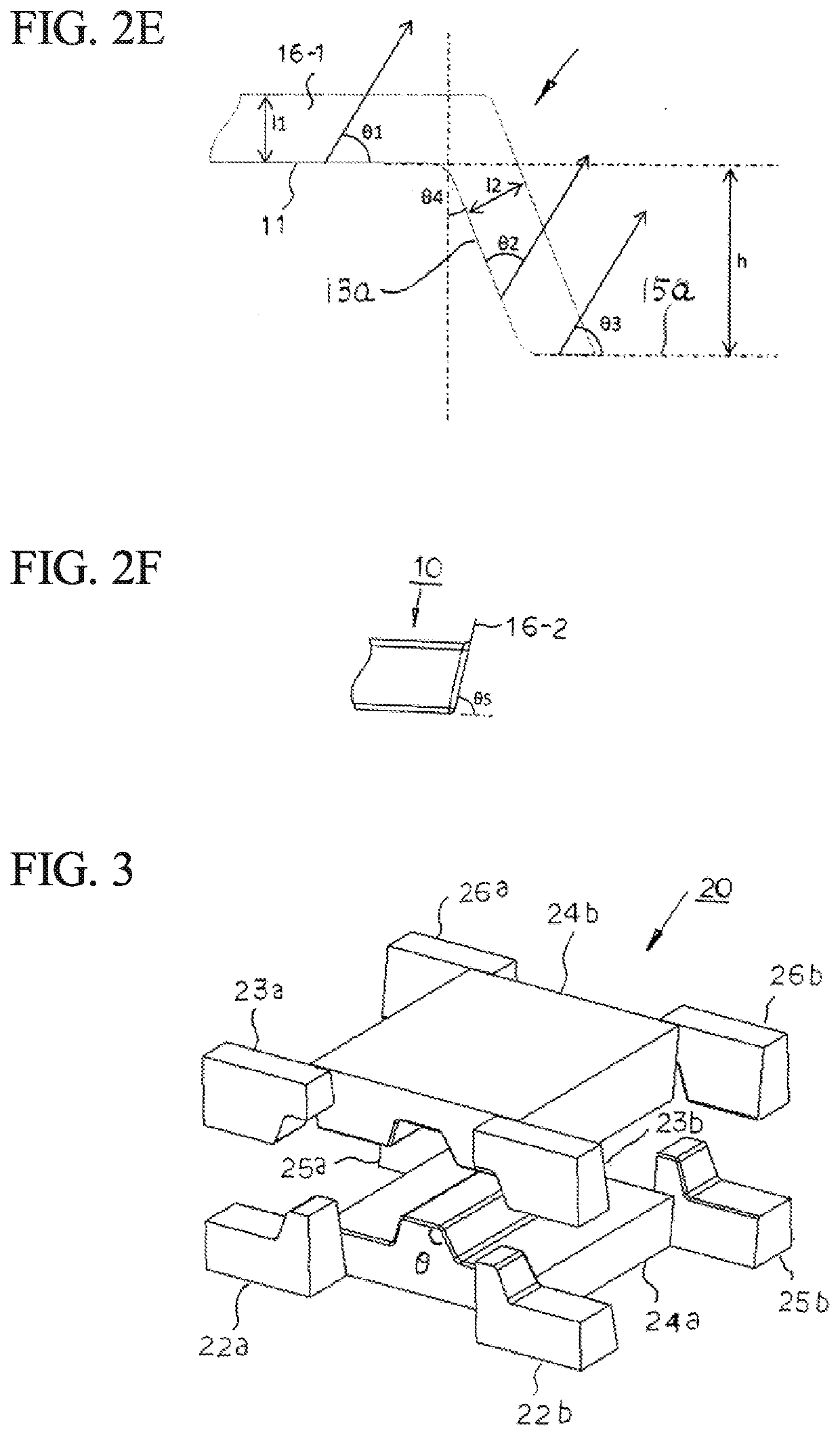Press-formed article, press-forming method, and press-forming apparatus
a press-forming method and press-forming technology, applied in the field of press-forming, can solve the problems of low flexibility of design of the floor cross member, and the difficulty of conventional press-forming methods to enable cold forming of the continuous outward flange b>4/b> including the curving section,
- Summary
- Abstract
- Description
- Claims
- Application Information
AI Technical Summary
Benefits of technology
Problems solved by technology
Method used
Image
Examples
embodiment 1
(1) Embodiment 1
1. Press-Formed Article 10 According to the Present Embodiment
[0106]FIG. 1 is a perspective view showing a press-formed article 10 according to the present embodiment.
[0107]The press-formed article 10 shown in FIG. 1 is a press-formed article formed from a high-tensile strength steel sheet (sheet thickness: 0.6 to 3.5 mm) having a tensile strength of not less than 390 MPa, preferably not less than 590 MPa, and more preferably not less than 980 MPa.
[0108]The press-formed article 10 has a substantially hat type cross section including a top sheet portion 11, two convex ridge line portions 12a, 12b, two sidewalls 13a, 13b, and two concaved ridge line portions 14a, 14b, and two flanges 15a, 15b.
[0109]In this cross section, two convex ridge line portions 12a, 12b are both continuing to the top sheet portion 11. Each of the two sidewalls 13a, 13b continues to each of the two convex ridge line portions 12a, 12b. Each of the two concaved ridge line portions 14a, 14b continu...
embodiment 2
(2) Embodiment 2
[0160]In FIG. 8A to FIG. 23 which are referred to in the following explanation, with respect to the punch and the die, reference numbers are assigned such as first punch 24a-1, first die 24b-1, second punches 22a-1 to 3, 22b-1 to 3, 25a-1 to 3, 25b-1 to 3, and second dies 23a-1 to 3, 23b-1 to 3, 26a-1 to 3, 26b-1 to 3. The difference of the number assigned after the symbol “-” means that merely the outer surface shape of the punch or the inner surface shape of the die is modified.
[0161]FIG. 8A to FIG. 8F are explanatory views showing an overview of a state where an intermediate formed article 10-3 of the press-formed article 10 is manufactured by using a press-forming apparatus 20-1 according to this embodiment. FIG. 8A is a perspective view showing a main part of the press-forming apparatus 20-1 after forming the stepped portion 16-2 which becomes the outward flange. FIG. 8B is a perspective view showing a main part of the intermediate formed article 10-3 formed wit...
embodiment 3
(3) Embodiment 3
[0180]FIG. 14 is a perspective view showing the press-formed article 10 according to the present embodiment.
[0181]FIG. 15 is an explanatory view showing an overview of a state where an intermediate formed article 10-5 of the press-formed article 10 is manufactured by using a press-forming apparatus 20-2 according to this embodiment.
[0182]FIG. 15A is a perspective view showing a main part of the press-forming apparatus 20-2 after forming the stepped portion 16-2 which becomes the outward flange.
[0183]FIG. 15B is a perspective view showing a main part of the intermediate formed article 10-5 formed with the stepped portion 16-2. FIG. 15C is a perspective view showing an area in the vicinity of the outward flange 16-2 of the press-formed article 10. FIG. 15D is an A-arrow view in FIG. 15C. FIG. 15E is a B-arrow view in FIG. 15C.
[0184]FIG. 16 is a perspective view showing members of the press-forming apparatus 20-2 according to this embodiment.
[0185]FIG. 17 is an explanat...
PUM
 Login to View More
Login to View More Abstract
Description
Claims
Application Information
 Login to View More
Login to View More - R&D
- Intellectual Property
- Life Sciences
- Materials
- Tech Scout
- Unparalleled Data Quality
- Higher Quality Content
- 60% Fewer Hallucinations
Browse by: Latest US Patents, China's latest patents, Technical Efficacy Thesaurus, Application Domain, Technology Topic, Popular Technical Reports.
© 2025 PatSnap. All rights reserved.Legal|Privacy policy|Modern Slavery Act Transparency Statement|Sitemap|About US| Contact US: help@patsnap.com



